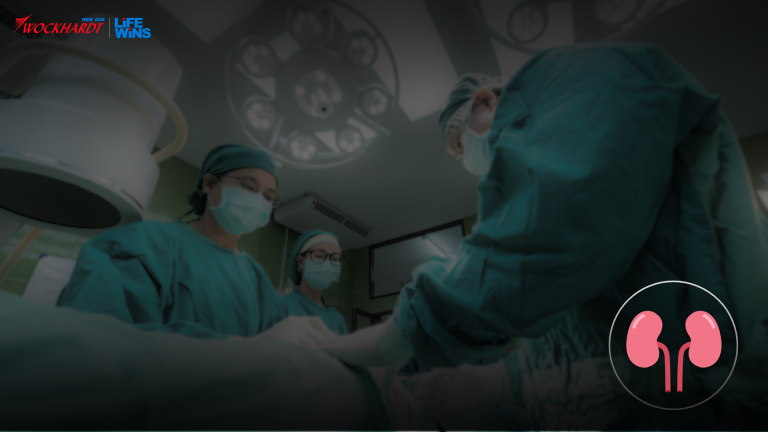
Breast Cancer Signs, Symptoms & Causes
Breast cancer is the second most common type of cancer in women; it originates in the breast. Breast cancer can also affect men, but it’s relatively more common in women. The causes of breast cancer may range from increasing age and a history of cancer in the family to the inheritance of mutations in the genes, starting periods early, etc. Out of the various types of cancers in women, breast cancer is the second leading cause of death. The chance of a woman dying from breast cancer is roughly 1 in 39, which is about 2.5%. Breast cancer can spread to other parts of the body through blood and lymph vessels. When this happens, it’s called metastasis. Recognising breast cancer symptoms in time can help prevent the condition from worsening and stop potential metastasis. Types of Breast Cancer Oncologists determine the type of breast cancer that has occurred in a patient to tailor an appropriate treatment plan that is effective but has the least possible side effects. The common types of breast cancer that can affect women include the following: Lobular Breast Cancer: This type begins in the milk-producing glands called lobules and tends to spread to nearby breast tissues. Invasive Ductal Carcinoma (IDC): Another type that begins in the milk ducts and spreads to nearby breast tissues. Ductal Carcinoma in situ (DCIS): Similar to IDC, it begins in the milk ducts but does not spread to surrounding tissues. Triple-negative Breast Cancer: An invasive form of breast cancer that spreads more quickly than other types. Inflammatory Breast Cancer: A rare, fast-growing form that resembles a rash on the breast. Paget’s Disease: A rare breast cancer that affects the skin of the nipple and appears as a rash. What Causes Breast Cancer? There are several reasons why a person may develop breast cancer, and breast cancer causes typically vary from person to person. Our body normally replaces old cells with new ones at a set pace. But in breast cancer, the body’s natural control system becomes dysfunctional, causing a fast and abnormal cell growth. While there’s no single cause of breast cancer, certain factors put women at an increased risk of developing this kind of cancer, including: The woman’s age: Breast cancer is typically reported in women who’re over the age of 50. The risk of breast cancer increases as women age. A Family History of Breast Cancer: If there’s a history of breast cancer in the family, the respective woman may be at an increased risk of developing it. The chances are higher if her mother or sister had developed breast cancer before their menopause. In addition, if a woman has had breast cancer in the past, she may be at an increased risk of developing it again. Age of Pregnancy: Women who’ve had their first child after the age of 30 are at a higher risk of breast cancer. In addition, those who’ve not given birth till or after 30 may be at more risk. Age of Menstruation: Women who got their periods before 12 are more prone to developing breast cancer in the future. Late Menopause: Women who’ve experienced a late menopause, typically after the age 55, stand at a higher risk of developing breast cancer. Radiation Treatment: The risk of breast cancer elevates if a woman has undergone chest radiation treatment at some point in her life. Unhealthy Lifestyle: Being obese or overweight, improper dietary habits, lack of physical activity, and unmonitored or regular consumption of alcohol are also among the leading causes of breast cancer. Using hormone replacement therapy or HRT for a long time can also put a woman at a higher risk. Breast Cancer Signs and Symptoms Breast cancer may or may not exhibit any symptoms, depending on its stage. In addition, the breast cancer symptoms and their severity may differ for every patient. Some commonly reported breast cancer signs and symptoms are as listed below: A Painless Lump in the Breast: This is the most common symptom of breast cancer. It may feel like a pain-free mass in the breast or underarm. For early diagnosis, women are advised to carefully assess their breasts for lumps as part of a habit. Dimpled or puckered skin on the breast: Sometimes, dimples or puckered skin on the breast may also indicate breast cancer. In addition, a change in the texture of the breast skin can also be indicative of breast cancer or another underlying condition. Bleeding or Unusual Discharge from the Nipple: Bleeding from nipples can be eerie and a possible sign of breast cancer. Also, any other abnormal discharge that is clear or has an unusual colour can be a cause of concern and requires prompt medical attention. A Change in the Size of the Breast or Nipple: Breast cancer can also cause the breast’s shape to change. Patients can see a difference in the shape of both breasts. Itchiness and a rash around the nipple that does not go away: A persistent urge to itch around the nipple can also be a sign of breast cancer. Contact a doctor if the itchiness of rashes around the nipples does not get better with medication. A pulled-in or retracted nipple: If the nipple suddenly becomes inverted or retracted, it’s concerning and requires a doctor’s intervention. Swollen and thickened skin over the breast: When the skin over the breast becomes swollen or noticeably thicker than usual, it may be a sign of a problem. This change in skin texture should be examined by a healthcare professional. Conclusion Breast cancer is a serious health issue that requires prompt diagnosis and timely treatment. If you notice breast cancer symptoms, as mentioned above, make sure you seek immediate medical intervention. For top-notch diagnostic and treatment facilities, you can reach out to the medical experts at Wockhardt Hospitals. We have a team of the best oncologists in India, with extensive experience in the diagnosis and treatment of cancer. Experts at Wockhardt Hospitals chalk out a personalised treatment plan for all patients, based on the specific requirements of their respective cases. Comprehensive and round-the-clock patient care is at the




































